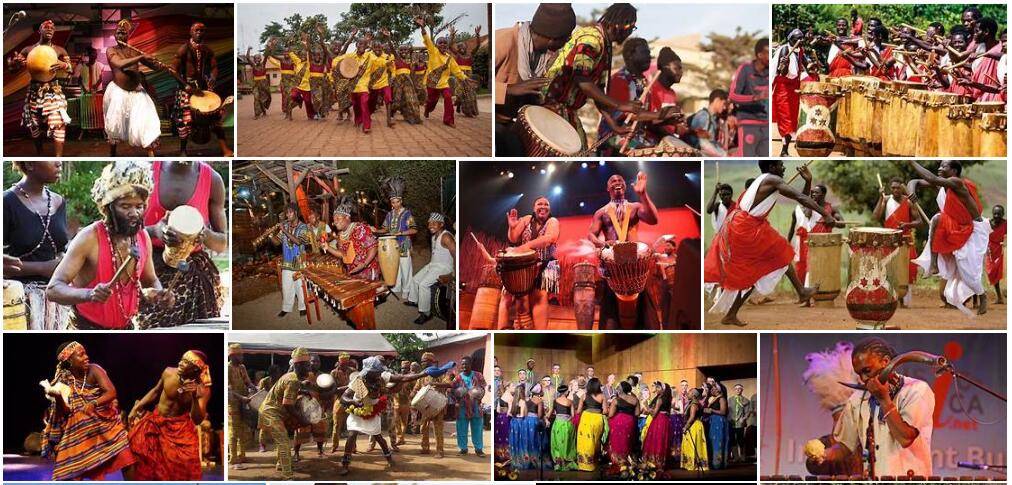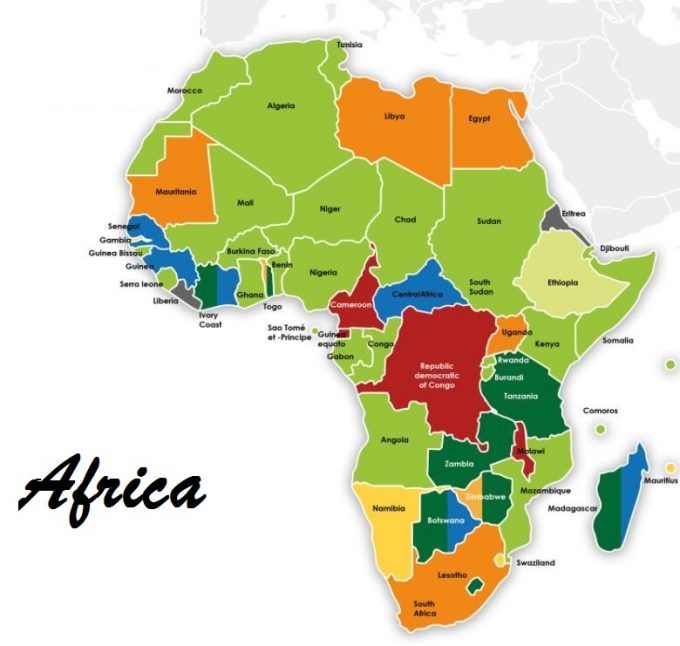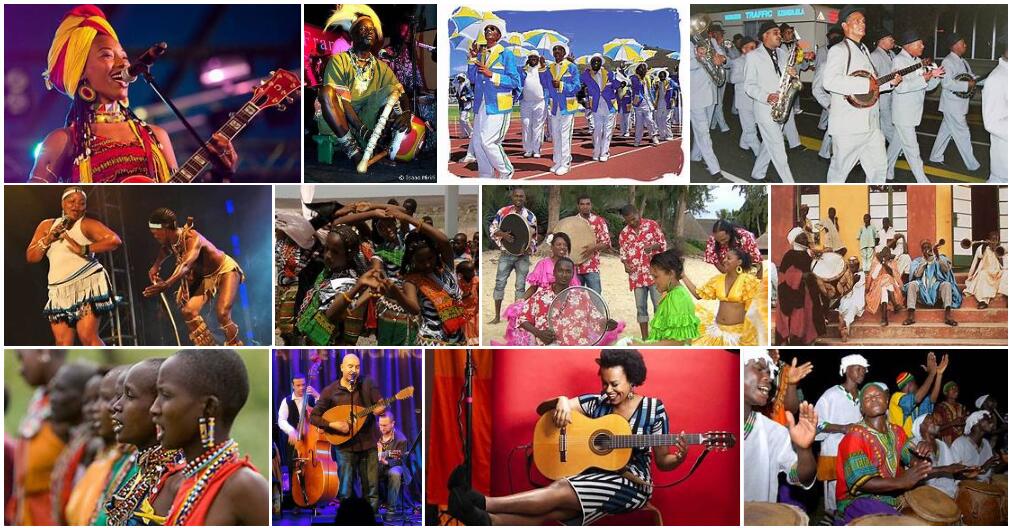In addition to have a large population according to Countryaah, Africa is a continent with rich and diverse music traditions. Music originating in Africa has had a fundamental impact on the historical development of the most important genres in international popular music, from blues and jazz to pop, rock and hip hop.
The term “African music” is commonly used to refer to traditional music and local forms of popular music in sub- Saharan Africa. In North Africa, music dominates the influence of Arab culture, which is not mentioned here.
Traditional music
Some musical characteristics are widely used in music traditions in sub-Saharan Africa. Features that are often emphasized as African are:
- rhythmic complexity in the form of complementary rhythms and polyrhythmics
- music organized on the basis of repetition of short melodic or rhythmic motifs
- alternation song- alternation between a lead singer (soloist) and group
In addition, the central function of music is often emphasized in social and ritual contexts, and the close connection to physical activity, such as dance music and work songs.
| Country | Life expectancy (years) | Life expectancy for women (years) | Life expectancy for men (years) |
| Algeria | 77 (2018) | 78 (2018) | 75 (2018) |
| Angola | 61 (2018) | 64 (2018) | 58 (2018) |
| Benin | 61 (2018) | 63 (2018) | 60 (2018) |
| Botswana | 69 (2018) | 72 (2018) | 66 (2018) |
| Burkina Faso | 61 (2018) | 62 (2018) | 60 (2018) |
| Burundi | 61 (2018) | 63 (2018) | 59 (2018) |
| Central African Republic | 53 (2018) | 55 (2018) | 51 (2018) |
| Comoros | 64 (2018) | 66 (2018) | 62 (2018) |
| Djibouti | 67 (2018) | 69 (2018) | 65 (2018) |
| Egypt | 72 (2018) | 74 (2018) | 70 (2018) |
| Equatorial Guinea | 58 (2018) | 60 (2018) | 57 (2018) |
| Ivory Coast | 57 (2018) | 59 (2018) | 56 (2018) |
| Eritrea | 66 (2018) | 68 (2018) | 64 (2018) |
| Ethiopia | 66 (2018) | 68 (2018) | 64 (2018) |
| Gabon | 66 (2018) | 68 (2018) | 64 (2018) |
| Gambia | 62 (2018) | 63 (2018) | 60 (2018) |
| Ghana | 64 (2018) | 65 (2018) | 63 (2018) |
| Guinea | 61 (2018) | 62 (2018) | 60 (2018) |
| Guinea-Bissau | 58 (2018) | 60 (2018) | 56 (2018) |
| Cameroon | 59 (2018) | 60 (2018) | 58 (2018) |
| Cape Verde | 73 (2018) | 76 (2018) | 69 (2018) |
| Kenya | 66 (2018) | 69 (2018) | 64 (2018) |
| Congo-Brazzaville | 64 (2018) | 66 (2018) | 63 (2018) |
| Congo-Kinshasa | 60 (2018) | 62 (2018) | 59 (2018) |
| Lesotho | 54 (2018) | 57 (2018) | 51 (2018) |
| Liberia | 64 (2018) | 65 (2018) | 62 (2018) |
| Libya | 73 (2018) | 76 (2018) | 70 (2018) |
| Madagascar | 67 (2018) | 68 (2018) | 65 (2018) |
| Malawi | 64 (2018) | 67 (2018) | 61 (2018) |
| Mali | 59 (2018) | 60 (2018) | 58 (2018) |
| Morocco | 76 (2018) | 78 (2018) | 75 (2018) |
| Mauritania | 65 (2018) | 66 (2018) | 63 (2018) |
| Mauritius | 74 (2018) | 78 (2018) | 71 (2018) |
| Mozambique | 60 (2018) | 63 (2018) | 57 (2018) |
| Namibia | 63 (2018) | 66 (2018) | 60 (2018) |
| Niger | 62 (2018) | 63 (2018) | 61 (2018) |
| Nigeria | 54 (2018) | 55 (2018) | 53 (2018) |
| Rwanda | 69 (2018) | 71 (2018) | 67 (2018) |
| São Tomé and Príncipe | 70 (2018) | 73 (2018) | 68 (2018) |
| Senegal | 68 (2018) | 70 (2018) | 66 (2018) |
| Seychelles | 73 (2018) | 77 (2018) | 69 (2018) |
| Sierra Leone | 54 (2018) | 55 (2018) | 53 (2018) |
| Somalia | 57 (2018) | 59 (2018) | 55 (2018) |
| Sudan | 65 (2018) | 67 (2018) | 63 (2018) |
| Swaziland | – | – | – |
| South Africa | 64 (2018) | 67 (2018) | 60 (2018) |
| South Sudan | 58 (2018) | 59 (2018) | 56 (2018) |
| Tanzania | 65 (2018) | 67 (2018) | 63 (2018) |
| Chad | 54 (2018) | 55 (2018) | 53 (2018) |
| Togo | 61 (2018) | 62 (2018) | 60 (2018) |
| Tunisia | 77 (2018) | 79 (2018) | 74 (2018) |
| Uganda | 63 (2018) | 65 (2018) | 61 (2018) |
| Zambia | 64 (2018) | 66 (2018) | 61 (2018) |
| Zimbabwe | 61 (2018) | 63 (2018) | 60 (2018) |
Instruments and forms of music
The historical evolution of music traditions in Africa is influenced by cultural contact between peoples through migration, trade, colonization and mission. The influence of Arabic music is considerable in West Africa, the Sahel region and along the coast of East Africa. In the former British colonies there is a significant influence of European ecclesiastical song. Trading routes across the ocean contributed to the development of new hybrid music genres in Africa. Taarab in Tanzania is influenced by Indian music and the morna genre on Cape Verde Islands are based on Portuguese fado. The string instrument valiha came across the sea from Indonesia to Madagascar where it is now considered a national instrument.
In African music traditions we find many distinctive instruments and musical expressions. Drums are available in myriad sizes and designs. The original West African djemben has become a popular instrument of international spread. Drum music with a very complex polyrhythmic music can be found in the ewe groups in Ghana and wolof in Senegal and Gambia. Balafon and other xylophone instruments are found in many editions across much of the continent. The same is true of the many variants of lamellophones (mbira, sanza). Korais the big harp to the grotesques in the mandinka tradition, with a virtuoso playing technique. Otherwise, there are many varieties of stringed instruments, horns, whistles, lute instruments, harps, lyres, music loops and various percussion instruments.
The song in most African music traditions is monophonic, often structured as an alternate song. Polyphonic traditions can be found among the people groups san in Kalahari and shona in Mozambique and Zimbabwe. Aka and other folk groups in Central Africa have a special polyphonic vocal music based on vocal sounds. In several countries there are popular short traditions with multi-voice singing based on European ecclesiastical chant and local music traditions, such as the isicathamiya song in the Zulu culture in South Africa.
Several African music traditions are cultivated today in Latin America, more or less altered or reshaped in encounters with other music. Among the music cultures with the strongest traditional African features are capoeira in Brazil, candombe in Uruguay and yoruba music in Cuba. The African influence has otherwise been fundamental in the development of modern Latin American music. Rhythm instruments in samba (agogo, reco-reco, chocallo) and salsa (congas, bongos, maracas,guiro) all originate from Africa.
Populous music
Urban African popular music is often based on traditional rhythms and instruments, along with influences from Western popular music and African-American music. Chimurenga -Music in Zimbabwe, which played a significant role in the struggle against apartheid, adopted mbiraens rhythms of modern band instruments. Mbalax in Senegal and The Gambia is a modern popular music based on the rhythms of the sabar drums. Congolese rumba and soukous are based on Caribbean genres. Marrabenta in Mozambique is a fusion of Western popular music, Portuguese song and local rhythms. In the 1960s and beyond, the popular genre came afrobeat, based on a fusion between big band music and local rhythms from Nigeria. Afrobeats (with s) is based on recent international popular music such as hip hop and R&B. This genre was developed in Nigeria, Ghana and London from the 2000s and has reached a wide international audience.
Other popular African music includes genres such as afro-jazz, jive, kwela, highlife and juju.
Artists
A number of singers and musicians from African countries have achieved great international recognition. Stella Chiweshe and Toumani Diabaté have brought the mbira and choir to an international audience respectively. Hugh Masekela was a prominent jazz trumpet player. Some of the best known in popular music are Miriam Makeba, Manu Dibango, King Sunny Ade, Fela Anikulapo Kuti and his son Femi Kuti, Salif Keita, Ali Farka Toure, Youssou N’Dour, Angélique Kidjo, Wizkid and Baaba Maal.



